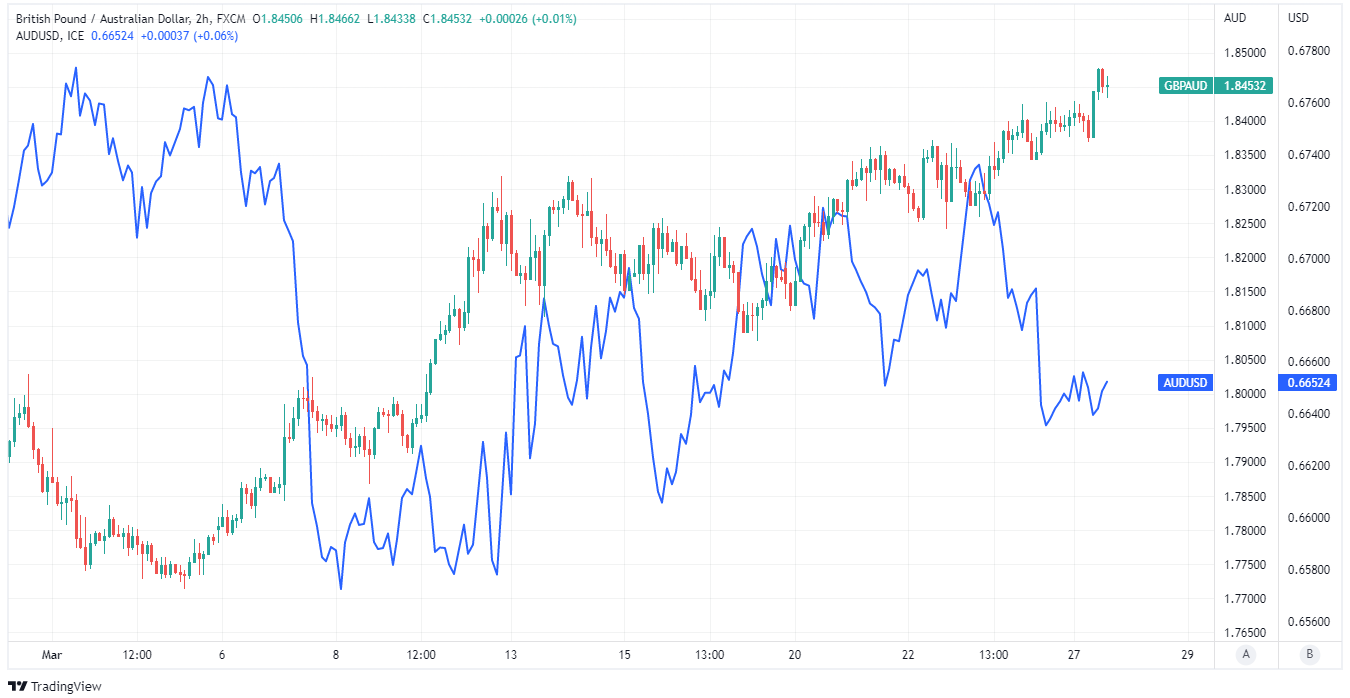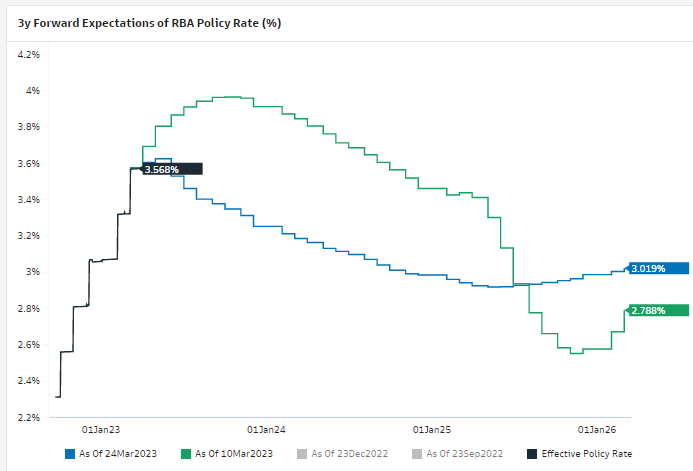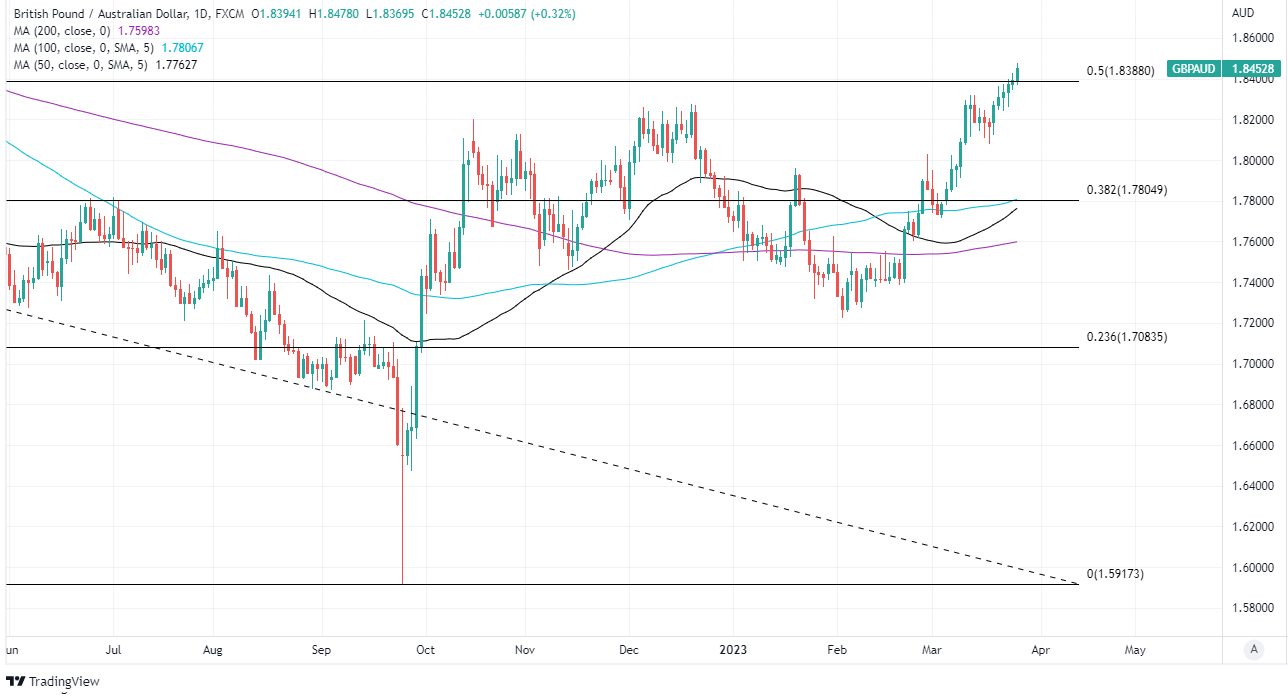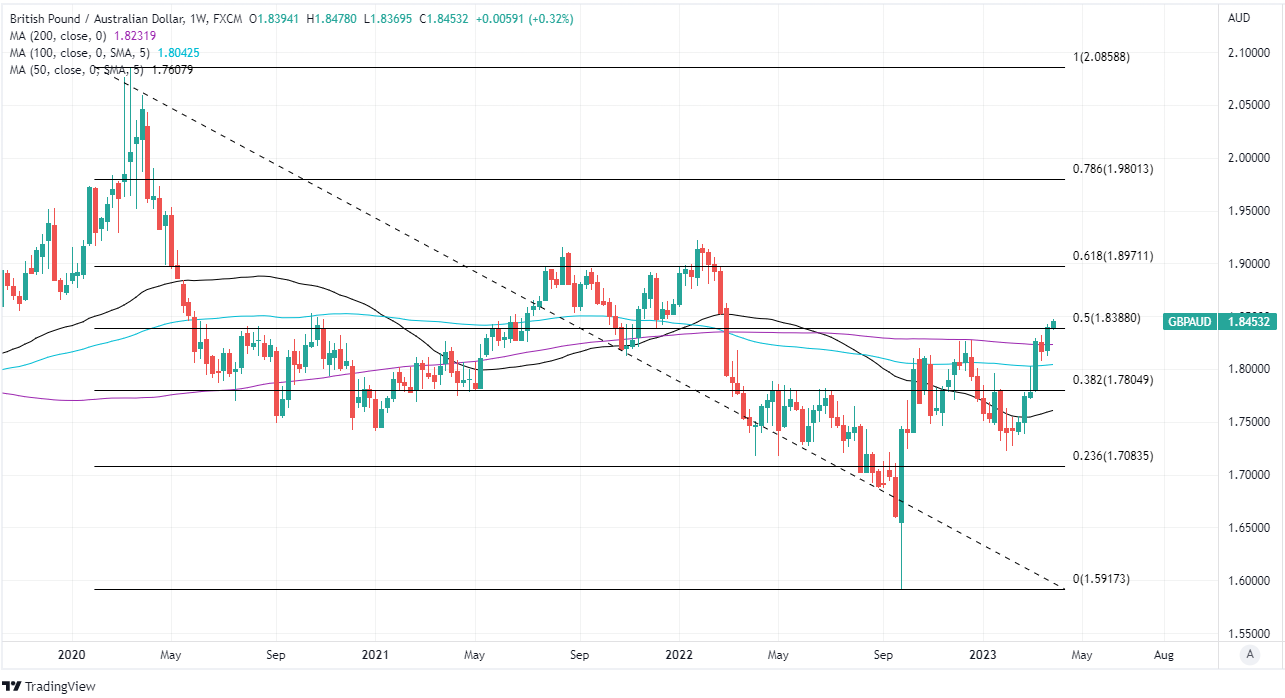GBP/AUD Week Ahead Forecast: Risk of Corrective Setback
- GBP/AUD risking corrective setback from 13-month high
- If retail sales or CPI prompts increase in RBA rate pricing
- Both cited by RBA as inputs for next week's rate decision
- BoE in focus for GBP as RBA outlook dominates for AUD

Image © Adobe Stock
The Pound to Australian Dollar exchange rate reached some of its best levels for more than a year early in the new week but would risk a corrective setback in the days ahead if the assumed Reserve Bank of Australia (RBA) cash rate outlook shifts 'hawkishly' in response to Wednesday's Australian inflation figures.
Australia's Dollar was a laggard among major currencies alongside the New Zealand Dollar and Norwegian Krone on Monday even as a recovery in the banking sector saw German, French, Swiss and Swedish stocks leading a broader global rebound for global markets.
Asia Pacific assets including stocks and currencies were underperformers to open the new week after the National Bureau of Statistics of China said industrial profits fell -22.9% for the year to the end of February, potentially explaining the Australian Dollars' early losses.
"Australian economic data will influence expectations for Australian interest rates and AUD/USD too," says Carol Kong, an economist and currency strategist at Commonwealth Bank of Australia, after flagging the U.S. banking sector as a likely important influence for all currencies this week.
Above: Pound to Australian Dollar rate shown at 2-hour intervals alongside AUD/USD. Click image for closer inspection.
"The governor of the Reserve Bank of Australia flagged four Australian data releases that will inform their interest rate decision at the April meeting. Two of the data were strong (NAB business survey and the low unemployment rate)," Kong and colleagues write in a Monday research briefing.
Early Australian Dollar declines have helped the Pound rise to its best level since late in February 2022 and the onset of Russia's full-scale invasion of Ukraine but the rally in GBP/AUD would risk a partial reversal as soon as this Tuesday if economic data coming from down under pans out for the Aussie.
Tuesday's retail sales numbers and Wednesday's inflation figure for February were both recently cited by Governor Philip Lowe as likely determinants of next week's cash rate decision but are both now even more important because of the recent shift in market pricing of the outlook for RBA policy.
"The RBA’s tone has been particularly sensitive to recent data direction," says Michael Cahill, a G10 FX strategist at Goldman Sachs.
Above: Change in market-implied expectations for RBA cash rate between selected dates. Source: Goldman Sachs Marquee. (To optimise the timing of international payments you could consider setting a free FX rate alert here.)
With interest rate derivative markets having fully priced out the prospect of an April increase in the RBA cash rate since the failure of Silicon Valley Bank and others earlier in March, the risk in and around any of this week's releases is squarely on the upside for the Australian Dollar.
"This adds to the focus on Australia’s key data releases. Retail sales are expected to have risen in February though through the sharp swings of recent months, consumer spending looks to be about flat net, a weak trend," says Sean Callow, a senior FX strategist at Westpac, in Sydney.
"Westpac expects a steady hand in April but a final hike in May. Markets start this week pricing very small risks of an April or May hike, then sizeable rate cut risks from June onwards," Callow writes in Monday market commentary.
The economist consensus is that retail sales likely rose 0.2% while inflation remained unchanged at an annual 7.4% in February, although Westpac forecasts a 0.5% increase in retail sales and a 7.4% inflation rate.
Above: GBP/AUD at daily intervals with selected moving averages indicating possible areas of technical support for Sterling and Fibonacci retracements of 2020 downtrend indicating possible areas of technical resistance. Click image for closer inspection.
"AUD has been the worst performing G10 currency over the past month, driven by a combination of risk-off sentiment, dovish RBA and positioning. The trade-weighted index is now trading close to October 2022 lows," says Adarsh Sinha, co-head of Asia FX and rates strategy at BofA Global Research.
"This represents attractive levels to enter AUD longs in our view," Sinha and colleagues wrote in a research briefing on Friday.
Any signs of a fresh upturn for Australian inflation on Wednesday would likely lead the market to begin betting on another increase in the cash rate being announced next Tuesday in a process that would also potentially force GBP/AUD into a corrective setback.
Before then Sterling is also likely to pay close attention to public remarks from Bank of England (BoE) Governor Andrew Bailey on Monday and Tuesday, which are the highlights of an otherwise sparse UK calendar.
Above: Quantitative model-derived estimates of probable trading ranges for selected currency pairs this week. Source Pound Sterling Live. (If you are looking to protect or boost your international payment budget you could consider securing today's rate for use in the future, or set an order for your ideal rate when it is achieved, more information can be found here.)
This is all after the BoE raised Bank Rate from 4% to 4.25% last week, citing an economy that has been less weak than expected in recent months, but left financial markets guessing about the outlook when pegging future decisions to the data emerging from the UK economy up ahead.
"Odd companions at the top of the trending table are the yen, which got a solid bump from the recent downshift in global yields and sterling, where got a minor upgrade in BoE rhetoric on defending against inflation risks, but not much else," writes John Hardy, head of FX strategy at Saxo Bank, in a Monday commentary.
Last week's increase took Bank Rate to its highest since shortly after the collapse of Lehman Brothers in September 2008 and leaves it sitting close to the midpoint of the three-to-six percent range in which it has spent roughly 96% of the time since the Bank of England's incorporation in 1694.
This is something of a victory for policymakers and other stewards of the monetary system, given how many had once surmised that central banks would struggle to reverse or leave behind the near-zero interest rates and quantitative easing policies that were widely used in the years after the 2008 financial crisis.
Above: Pound to Australian Dollar rate shown at weekly intervals with Fibonacci retracements of 2020 downtrend indicating possible areas of technical resistance for Sterling and selected moving averages denoting prospective support. Click image for closer inspection. To optimise the timing of international payments you could consider setting a free FX rate alert here.





